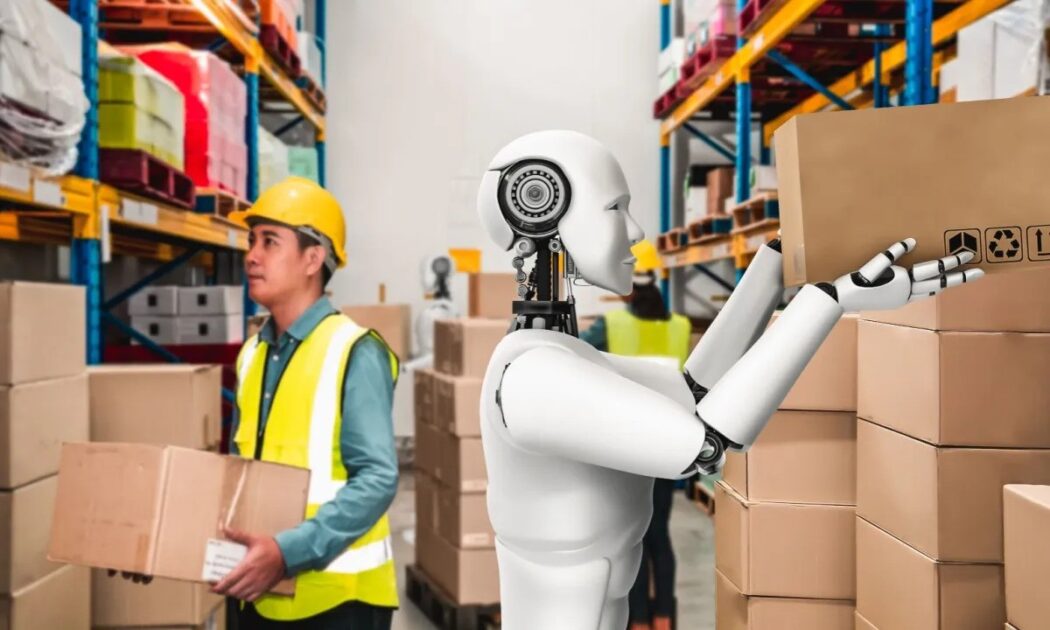Warehouse Automation: Job Killers or the Best Coworkers Ever?

Automation in workplaces is rapidly transforming industries across the globe, and warehouses are at the forefront of this transformation. According to Statista the global market for warehouse automation via robots is expected to grow over $51 billion by 2030. Unlike humans who frequently need breaks, often make mistakes and cause operational inefficiency, robots are seen to enhance efficiency with the capability of handling 1,000 storage and retrieval tasks per aisle per hour. However, despite various advantages, fully automated systems are hitting their operational limits requiring humans to step in. Concerns are revolving around whether humans will be completely replaced by automated robots; however, research suggests that an integrated system — a human and robot duet enhances operational efficiency with more cost effectiveness. Humans cover parts of the job robots can’t perform and automated systems handle tasks that humans can’t carry out effectively.
The Role of Humans in Automation
The testimonies of companies who have deployed fully automated fulfillment systems like CEVA, AutoStore, Ocado, Exotec, Amazon Robotics, and Locus Robotics reveal that although these systems can significantly improve operational efficiency, warehouse layouts and cost restraints reduce their operational capabilities. On the other hand, businesses that implement an integrated system of human robot collaboration — cobots — have reported benefits such as increased worker productivity, elevation of stress, reduction of man made mistakes and increased worker satisfaction.
According to experimental data, when humans lead warehouse operations and robots follow, warehouse efficiency boots by 8.3% as compared to robots solely running warehouses. Employees working alongside robots have shown positive psychological responses by saying that they feel safer, more productive and excited to do work.
The Amazon Factor: Job Cuts vs. Robot Expansion
Despite the advantages of implementing a robot and human collaborative system, tech giants like Amazon have deployed more than 750,000 robots replacing more than 100,000 workers since 2021. Despite these huge numbers Amazon has claimed that its robots complement, rather than replace, human workers. However, industry analysts remain doubtful. According to reports, Amazon warehouse robots have increased 33 times over the past few years, sparking discussion on social media regarding the future of human workers in warehouses.
Striking a Balance: The Path Forward
According to experts, the future of warehouses does not lie in either choosing between humans or automation but rather a balanced approach which maximises strengths of both. Warehouses should involve workers in strategies regarding automation deployment. Workers should be allowed some autonomy in task execution to boost productivity. Undesirable tasks should be automated first to increase job satisfaction. Most importantly, a flexible work environment should be designed that fosters human and robotic collaboration.
Overall, the success of any warehouses highly depends on the strategy they use to leverage both human and robotic strengths. The extinction of the human workforce is far from inevitable — rather human workers are adapting to more strategic roles which will reshape warehouses and automation systems.
As automation transforms warehouse operations, material handling equipment that is reliable and easy to use is increasingly vital. Our wide range of products—tilt trucks, stackers, safety railings, and all-terrain vehicles—are designed for support of the real people working hard behind the scenes. Whether it is that your team operates with robots or manages manual workflows, our equipment helps to make tasks daily safer and smoother and more efficient. We understand that each warehouse has its own unique layout. Each warehouse also has its own challenges, and goals. That is why we offer some practical solutions, durable and tailored to more specific needs of yours. Through combining smart automation and ideal tools, operations stay strong while your team remains central to the process, during each step.
